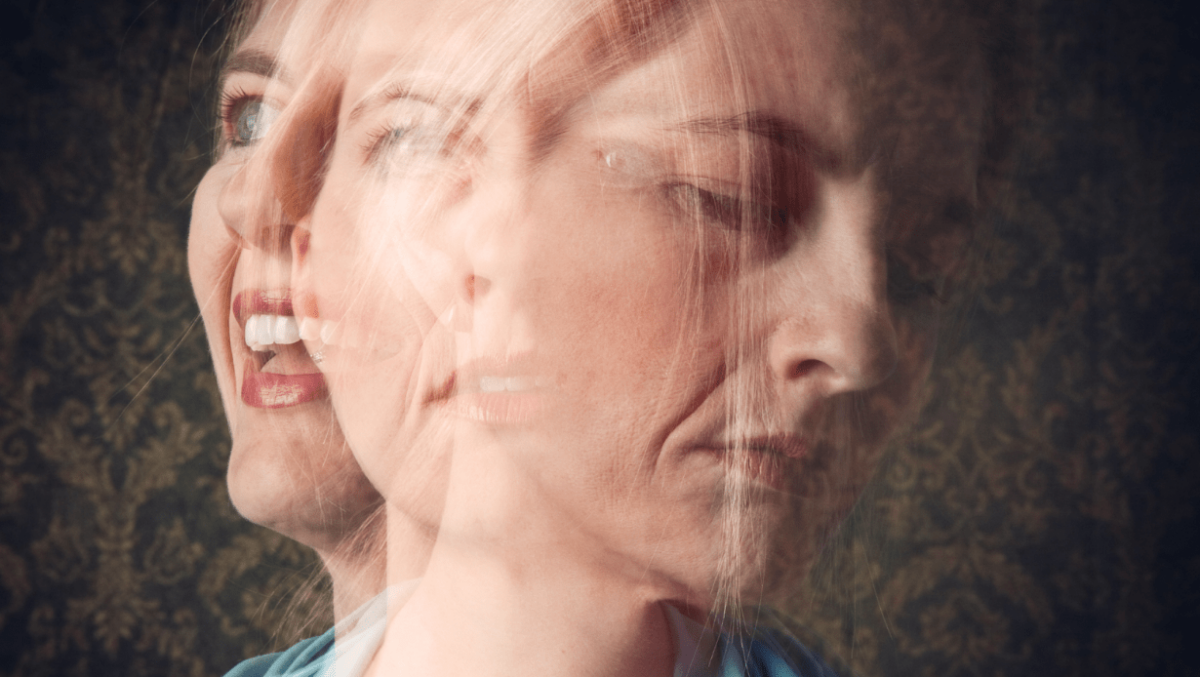

You’ve likely heard the term “mood disorder” pertaining to mental health and thought to yourself, “What exactly is a mood disorder, anyway? If I’m told I have a mood disorder, does that mean there’s something wrong with me?”
It’s perfectly logical to ask such questions. But rest assured, if you have a mood disorder, there’s nothing “wrong” with you. You aren’t broken or any less of a person. Mood disorders aren’t something to be ashamed of. Rather, it’s just something you need help navigating so you can understand them and develop the tools and strategies you need to work through them.
In essence, mood disorders are an umbrella term for mental health concerns characterized by lowered and elevated moods and feelings. When you have a mood disorder, you experience emotional disturbances lasting two weeks or more. There are several mental health conditions categorized under the term mood disorder. Depending on your symptoms, you may have one or more if you feel varying highs and lows in your emotions.
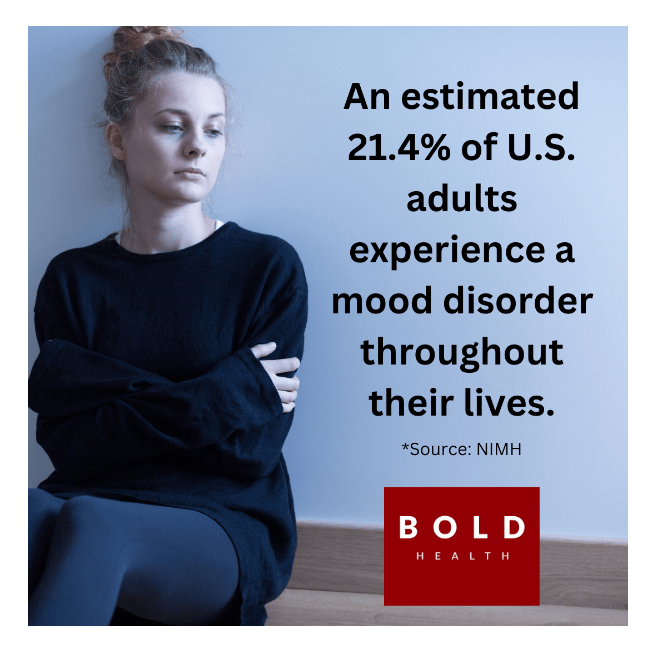
Mood Disorder Symptoms
Some symptoms of mood disorders are easier to spot than others. You may exhibit symptoms of a mood disorder you don’t even realize. You might just think you’re stressed, overwhelmed, tired, or simply feeling a bit out of sorts. To effectively answer the question, “What is a mood disorder?” you have to know what to look for.
Some of the most common mood disorder symptoms include the following:
- frequent feelings of sadness
- irritability and hostility
- suicidal ideation
- loss of interest in things you once enjoyed
- trouble in your relationships
- feeling worthless, less-than, and inadequate
- feeling hopeless
- trouble sleeping
- excessive feelings of guilt
- decreased amounts of energy
- changes in weight and appetite
- trouble concentrating
- physical discomforts like headaches and stomach aches
- racing thoughts
- restlessness
- participating in risky behavior
Is Depression Genetic? Environmental & Inherited Factors
Generally speaking, any of the types of mood disorders negatively impact your mood, energy levels, thinking abilities, and sleep. Of course, stress can cause these things too. But stress can often lead to the development of mood disorders. The important thing is that you don’t just shrug off any mood disorder symptoms you notice. The sooner you get help, the better.
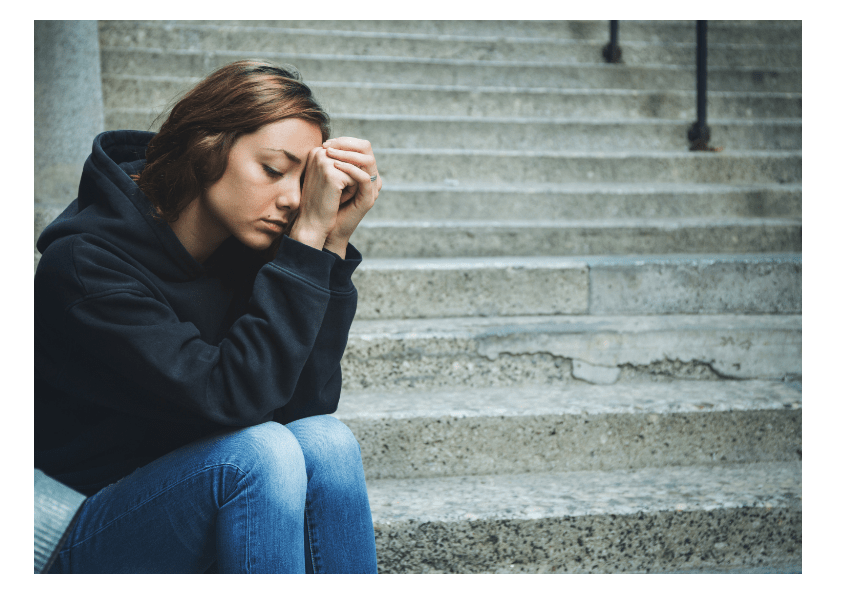
The Most Common Types of Mood Disorders
As previously stated, “mood disorder” is an umbrella term that refers to several mental health concerns. There are several types and subtypes of mood disorders, but these are some of the most common.
Major Depressive Disorder (MDD)
MDD is one of the most common types of mood disorder. It is characterized by prolonged low moods, overwhelming sadness, dread, and irritability. When you struggle with major depressive disorder, you most likely find it difficult to appreciate things you once found enjoyable.
Having MDD goes beyond feeling a little blue or being in a bad mood – it’s a serious mental illness requiring professional treatment. To be diagnosed with major depression, you will have experienced symptoms of depression for at least two weeks. But most times, MDD symptoms last much longer, especially without proper treatment.
Bipolar Disorder
Affecting roughly 2.8% of the U.S. adult population, bipolar disorder may be a more common type of mood disorder than you realize. When you have bipolar disorder, also called “manic depression,” you experience frequent extreme emotional ups and downs. In other words, you can go from feeling very sad one minute to feeling energetic and jumpy the next.
There are four subtypes of bipolar disorder.
- Bipolar I Disorder– experiencing at least one manic episode; may or may not have had a depressive episode
- Bipolar II Disorder – experiencing at least one depressive episode, followed by a hypomanic episode (elevated mood); typically have longer depressive episodes
- Cyclothymic Disorder/Cyclothymia – experiencing fluctuating hypomania and depression lasting at least two years; feeling “normal” for weeks in between
- Unspecified Bipolar – experiencing clinically significant mood fluctuations without falling into the above categories
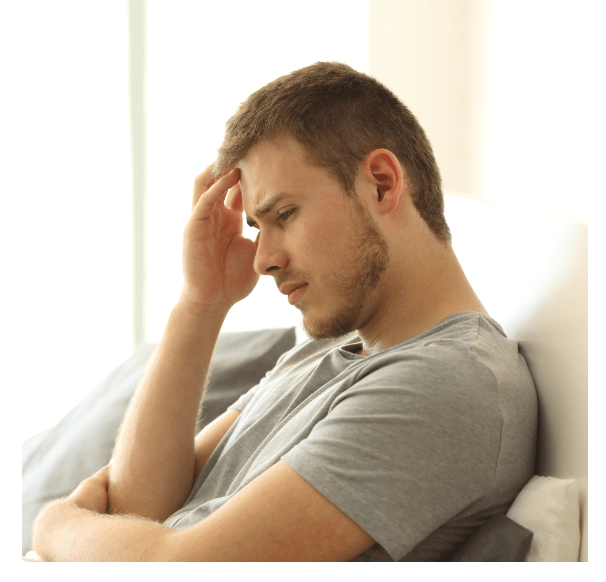
Dysthymic Disorder (Persistent Depressive Disorder)
Persistent depressive disorder is just as it sounds – persistent. Dysthymia presents itself as continuous, long-term depression. When you have persistent depressive disorder, you may feel gloomy, downcast, and unable to enjoy fun activities. While it’s not as severe as MDD, it’s still a form of depression that can negatively impact your everyday life.
Postpartum Depression (PPD)
One in seven women experiences PPD the year after having a baby. It’s a common type of mood disorder that perhaps isn’t discussed enough. Postpartum depression often comes with feelings of guilt and shame about not being able to “enjoy” motherhood and an inability to bond with your baby.
In our culture, many moms feel ashamed to feel this way, but it’s nothing to be ashamed of. Like any mood disorder, you don’t choose to have PPD. And getting help is always the best idea.
Seasonal Affective Disorder (SAD)
This type of mood disorder often strikes in the months of January and February, typically the gloomiest months when living far from the equator. With that said, you can suffer from SAD at any time of the year, no matter where you live.
When you have SAD, you experience a noticeable mood shift in the fall and winter months (typically.) You may feel tired and worthless and have trouble concentrating. Basically, you’re susceptible to all of the symptoms of depression, just at a more specific time of the year.
Substance-Induced Mood Disorder
Substance-induced mood disorders occur after you begin taking a specific drug or consuming alcohol. You may feel depressive or manic symptoms, including low energy, hopelessness, and apathy, as well as irritability, racing thoughts, and high energy levels.
Not everyone will experience substance-induced mood disorders after taking drugs or alcohol. Still, it’s good to be aware that this is a possibility when prescribed certain opioids or taking recreational drugs.
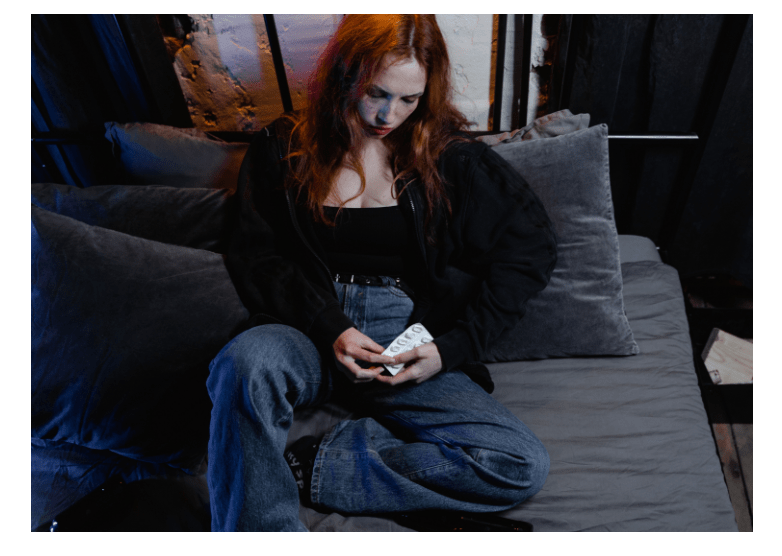
Tips For Getting Through The Worst Days Of Your Depression
Finding Mood Disorder Treatment in San Diego
If you live in the southern California area, at BOLD Health, we offer several mood disorder treatment options in San Diego at our beautiful Encinitas facility. Or, if you are in Los Angeles or anywhere in San Diego, we can provide you with teletherapy options, which are just as effective in treating mood disorders.
One of the most effective treatments is through our intensive outpatient program. Our IOP in San Diego is a more rigorous, structured treatment approach to help you overcome your mood disorder symptoms. Depending on your individual needs, your IOP in San Diego could include a combination of any of our available mood disorder treatments.
- individual therapy
- group therapy
- family therapy
- medication management
- ketamine treatment
How to Practice Gratitude When You’re Depressed: 8 Ways
We take a holistic approach to treating you in that we not only work to reduce your symptoms, but we also treat you, the individual. By taking the time to understand what brought you to seek help, we’re better able to provide you with top-notch, effective mood disorder treatment in San Diego.

Contact us to learn more about our many treatment options, including our IOP in San Diego. No matter what mood disorder you struggle with, we can help. It’s time to take back your life and overcome what troubles you.


